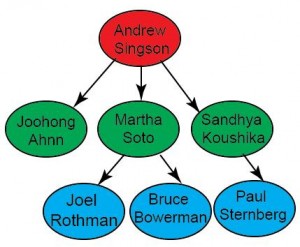Positional cloning of a mutant using the classical mapping strategy remains a bottleneck. The recent advent of whole genome sequencing partially solves this problem. However, typical whole genome sequencing provides so many sequence variations that it is tantalizing to associate every molecular lesion with the phenotype under investigation. Under these circumstances, an investigator would attempt to rescue the mutant by introducing genomic DNAs corresponding to the locus of mutation.
Generating transgenic lines is a challenging task for two reasons: first, there is a bit of a learning curve in mastering the art of microinjection. Second, not every lab has access to the rather expensive paraphernalia required. This is especially true in primarily undergraduate institutions. In fact, the very requirement of having to generate transgenic worms may dissuade such institutes from performing forward genetic screens.
Availability of transgenic lines carrying defined pieces of genomic DNA would circumvent both problems and would be an invaluable tool for the C. elegans community. One can simply cross transgenic lines with the mutant of interest to test for rescue.
Many labs generate several transgenic lines carrying defined piece(s) of genomic DNA for each rescue experiment. Typically, when a researcher X generates several lines, only one rescues the mutant phenotype and rest are either thrown out or kept frozen. Let us assume researcher A finds that the locus of his/her mutant lies within the same region. It would be far more convenient for A to borrow the lines from X than to repeat the same process all over again.
I suggest a system that would facilitate the sharing of transgenic animals carrying defined piece(s) of genomic DNA between labs. First, we should create a website CTGC (Caenorhabditis TransGenics Center). If a ‘donor lab’ has a transgenic line, s/he should visit CTGC website and enter details such as strain name, genotype, description, etc. The submitted information will be stored in a searchable database. The consumer lab can search this database by using key word, such as Cosmid name, which can then be directly requested through CTGC by completing a simple form.
Creating CTGC website is a relatively simple process. However, with the steady demand of transgenic strains from across the globe, many PIs may become reluctant to provide this service, which is quite understandable. Should some transgenic worm become as popular as daf-16 or daf-2 mutant, it is easy to imagine the work-load of the lab of its origin!
So, I suggest a policy in which, by submitting strain information, the donor lab is expected to distribute the strain to only 3 labs. Any subsequent request for the strain will be redirected to the recipient labs. The lab that made the strain won’t be held responsible for distributing the strain indefinitely! It is obligatory that the lab that receives the transgenic strain should ship it forward to at least 3 of the subsequent requests. The strain request will be handled in this way for the rest of the requests.
In order to keep track of the strain distribution, the entire strain request has to be processed through CTGC, which automatically registers the details of all the researchers who received this strain.
In the hypothetical example (figure 1), the transgenic line is originated from Singson lab. Singson lab has distributed this strain to 3 labs (Ahnn, Soto and Koushika labs). Therefore, the system will no longer show Singson lab as a potential source for this strain. Soto lab and Koushika lab are responsible for distributing this strain to one and two more labs, respectively. Finally, Ahnn, Rothman, Bowerman and Sternberg labs are responsible for distributing this strain to three other labs.
I believe that C. elegans community will be immensely benefited from CTGC and I look forward to your comments and suggestions to improve this concept.





